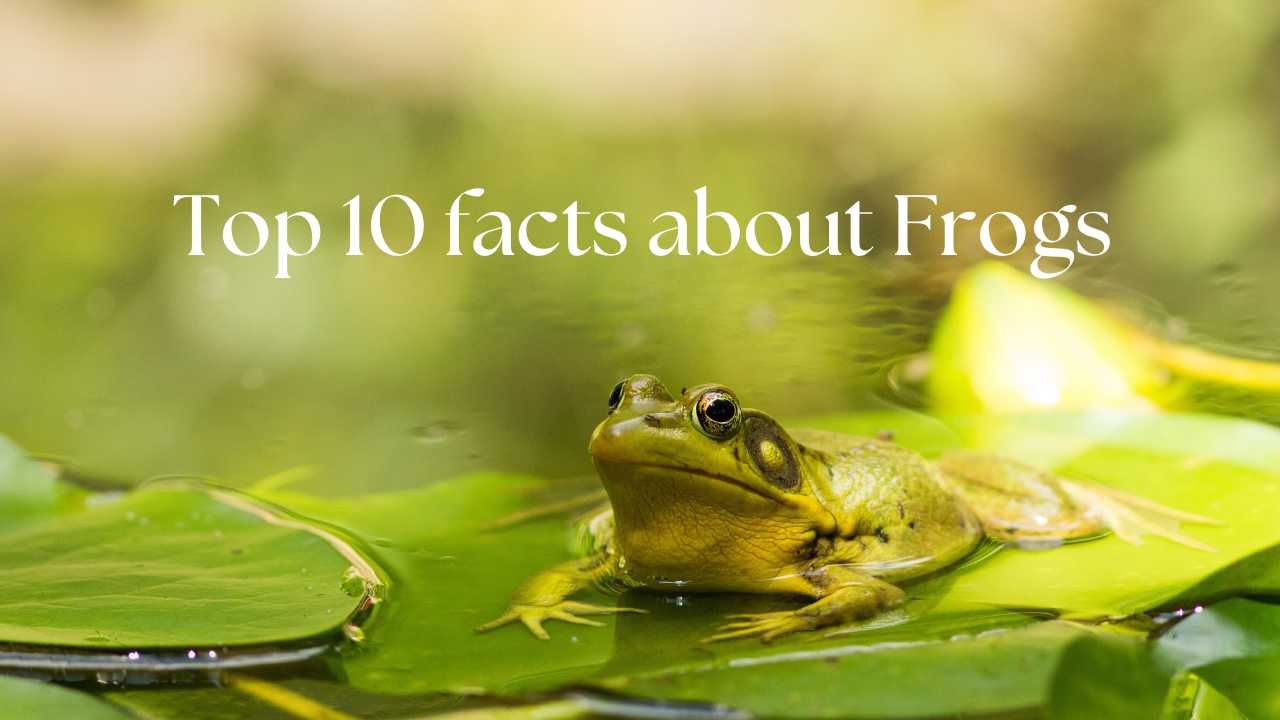What are frogs?
A frog is any member of the Anura order, a diverse and largely carnivorous group of short-bodied, tailless amphibians. Let’s explore some fascinating facts about frogs:
Distribution and Diversity:
Tropical rainforests have the highest concentration of species diversity among frogs, despite their widespread distribution from the tropics to subarctic regions.
They account for around 88% of extant amphibian species and are one of the five most diverse vertebrate orders.
Physical Characteristics:
An adult frog has a stout body, protruding eyes, an anteriorly attached tongue, limbs folded underneath, and no tail (although tailed frogs have a tail extension from the male cloaca).
Their skin varies in color from well-camouflaged dappled brown, grey, and green to vivid patterns of bright red or yellow and black, which can indicate toxicity and ward off predators.
Frogs have glandular skin with secretions ranging from distasteful to toxic.
Habitat and behavior:
Adult frogs live both in freshwater and on dry land. Some species have evolved to live underground or in trees.
They typically lay their eggs in water, and the eggs hatch into aquatic larvae called tadpoles with tails and internal gills.
Frogs have highly specialized rasping mouthparts suitable for herbivorous, omnivorous, or planktivorous diets.
Tadpoles metamorphose into adults to complete the life cycle.
Ecological Importance:
Frogs are extremely efficient at converting what they eat into body mass, making them an important food source for predators.
They play a vital role in the food web dynamics of many ecosystems.
Their semi-permeable skin makes them susceptible to dehydration, so they either live in moist places or have special adaptations for dry habitats.
In summary, frogs are fascinating creatures with diverse adaptations, essential ecological roles, and a rich variety of species across the globe.
Facts about frogs
There are more than 4,700 species of frogs available all over the world, and except in Antarctica, frogs are everywhere on this earth.
The golden poison dart is a highly poisonous frog that can kill 100,000 people with only one gram of poison.

The more vibrant colors of frogs make them more dangerous, and you can find every color of frog on this planet.
In North America, a frog species called a wood frog freezes itself totally in the winters. Its whole body gets frozen, including the heartbeat and breathing process, and as the climate changes, the body temperature of the frog also falls down and becomes normal.
The transparent frog, or glass frog, has skin transparency. One can easily see its heart, nerves, and digestive system from the outside.
Some frog species found in Indonesia breathe with their skin as they have no lungs.
The biggest frog was found in West Africa, the Goliath frog, which weighs more than 7 pounds, similar to a newborn baby.
Most of the frogs have teeth in the upper jaw area that help them hold the prey until they swallow it.
Frogs never drink water because their whole body absorbs water that keeps them hydrated.
A group of frogs is called an army.
Frequently Asked Questions
- Do all frogs live in the water? No, adult frogs vary in how much time they spend in water. For example, bullfrogs and green frogs are mostly aquatic, while toads and treefrogs spend most of their adult lives on land.
- Why must frog eggs be in water? Frog eggs lay in jelly-like masses and lack a hard shell. Water must cover them to prevent them from drying up and dying.
- What are tadpoles? Tadpoles are the larval stage of frogs, adapted to live underwater with gills. They undergo metamorphosis to transform into adult frogs.
- What do frogs eat? Adult frogs are predators, mainly eating insects, smaller frogs, and fish. Tadpoles are mostly vegetarian, feeding on algae.
- Does anything eat frogs? Yes, tadpoles and adult frogs have various predators, including fish, mammals, snakes, and birds.
- What’s the difference between a frog and a toad? Generally, toads have dry, warty skin and shorter legs for hopping, while frogs have smooth, moist skin and longer legs for swimming or leaping.
- Can toads give you warts? No, toads cannot give people warts. However, some amphibians secrete substances that can be irritating if they come into contact with mucous membranes.
- How do frogs make their calls? Some species have a vocal sac that vibrates when air is forced over the vocal cords, producing calls, or “ribbets.”






There are 2 comments
Mendhak ke bare mein
Mendhak ke bare meni